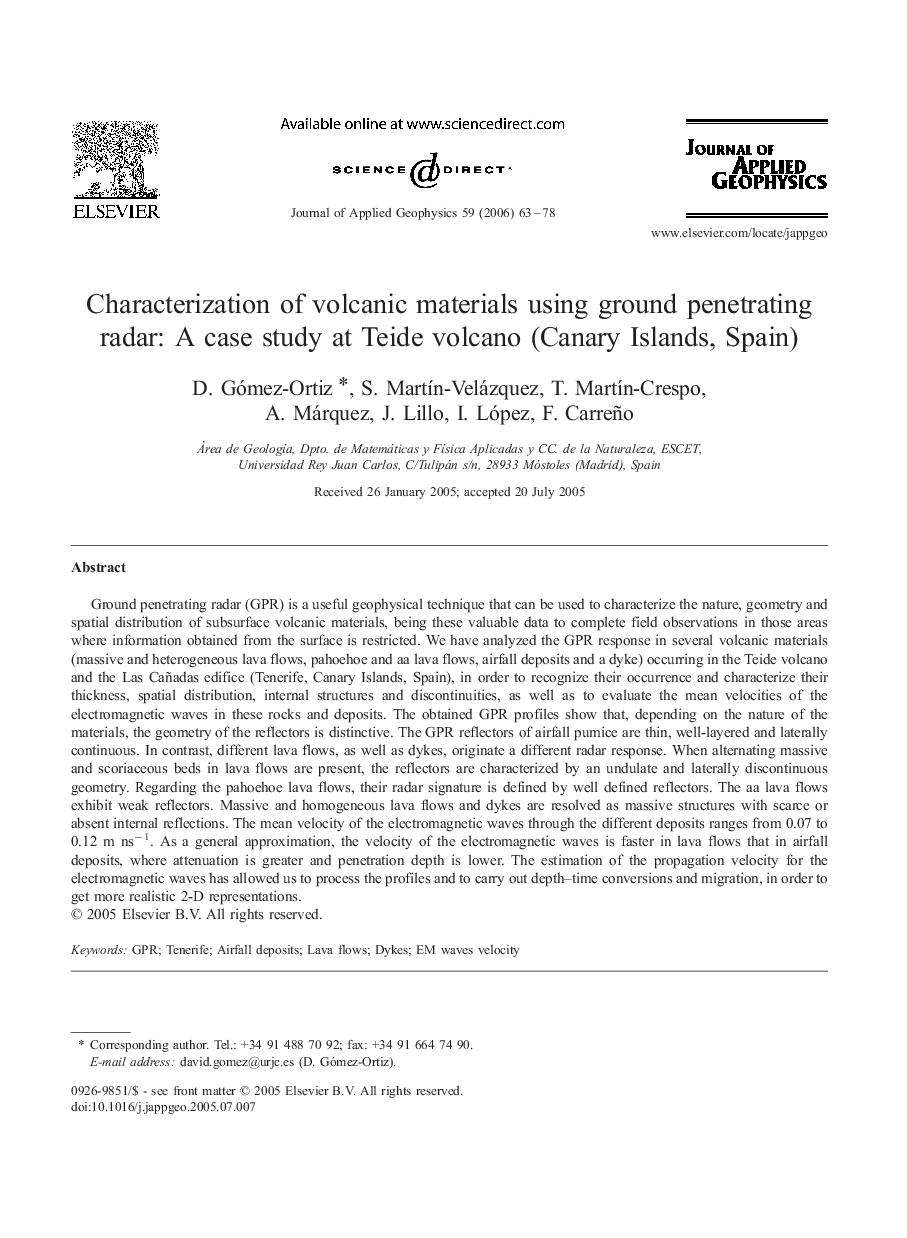| کد مقاله | کد نشریه | سال انتشار | مقاله انگلیسی | نسخه تمام متن |
|---|---|---|---|---|
| 4741281 | 1358656 | 2006 | 16 صفحه PDF | دانلود رایگان |

Ground penetrating radar (GPR) is a useful geophysical technique that can be used to characterize the nature, geometry and spatial distribution of subsurface volcanic materials, being these valuable data to complete field observations in those areas where information obtained from the surface is restricted. We have analyzed the GPR response in several volcanic materials (massive and heterogeneous lava flows, pahoehoe and aa lava flows, airfall deposits and a dyke) occurring in the Teide volcano and the Las Cañadas edifice (Tenerife, Canary Islands, Spain), in order to recognize their occurrence and characterize their thickness, spatial distribution, internal structures and discontinuities, as well as to evaluate the mean velocities of the electromagnetic waves in these rocks and deposits. The obtained GPR profiles show that, depending on the nature of the materials, the geometry of the reflectors is distinctive. The GPR reflectors of airfall pumice are thin, well-layered and laterally continuous. In contrast, different lava flows, as well as dykes, originate a different radar response. When alternating massive and scoriaceous beds in lava flows are present, the reflectors are characterized by an undulate and laterally discontinuous geometry. Regarding the pahoehoe lava flows, their radar signature is defined by well defined reflectors. The aa lava flows exhibit weak reflectors. Massive and homogeneous lava flows and dykes are resolved as massive structures with scarce or absent internal reflections. The mean velocity of the electromagnetic waves through the different deposits ranges from 0.07 to 0.12 m ns− 1. As a general approximation, the velocity of the electromagnetic waves is faster in lava flows that in airfall deposits, where attenuation is greater and penetration depth is lower. The estimation of the propagation velocity for the electromagnetic waves has allowed us to process the profiles and to carry out depth–time conversions and migration, in order to get more realistic 2-D representations.
Journal: Journal of Applied Geophysics - Volume 59, Issue 1, May 2006, Pages 63–78